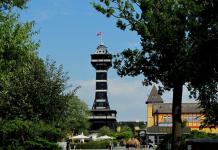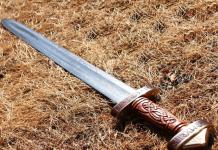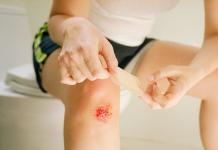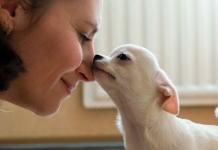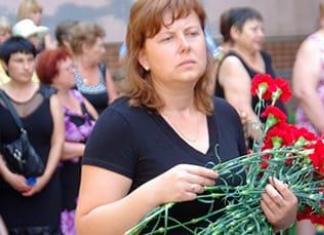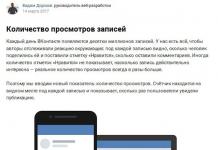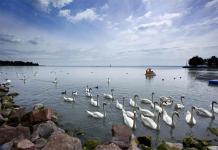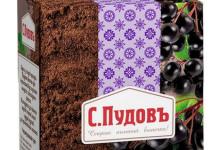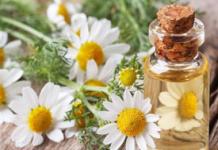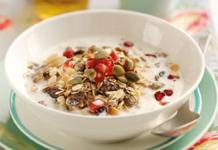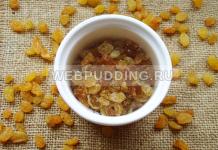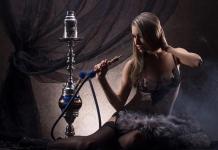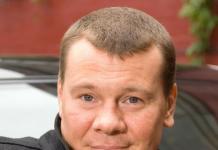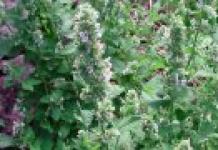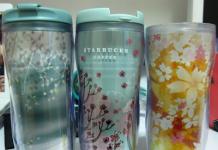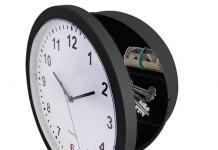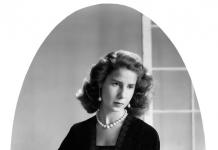To strengthen the immune system children in kindergarten undergo hardening procedures. Some parents are skeptical about this, but still agree to expose their kids to such preventive measures. The article will inform you about how it goes, what contraindications exist and what exercises are performed. Knowledge will help even at home to temper the baby.
Rules for the procedure
Such activities in a preschool institution are not new. Procedures were carried out in our childhood. They only have a positive effect on health. Today, such events are subject to high demands. We list the conditions when and how you can organize the hardening procedure.
- The event must take place regularly. Taking a break between procedures, this only reduces the resistance of the child's body to various diseases.
- Hardening in the preschool educational institution takes place gradually. The temperature in the room is gradually decreasing. If you do this regularly, then the child will not feel the difference.
- The hardening session for each pupil of the garden should be held individually. This is due to the fact that the immunity of children is different.
- Preschoolers definitely need to visually demonstrate how to temper. For them, an example can be the teacher himself, who will study and get used to the cool temperature together with the kids.
- Children can undergo cold therapy only if the doctor has allowed it.
- The air temperature in the room should not exceed +19 0 С.
Forms of events in the preschool educational institution
How it will be done - chooses the parent. On this basis, it is necessary to select a preschool institution where therapy is carried out according to a specific method.
To date, there are several ways to teach kids and heal them. The most commonly used forms and methods are:
- hardening by the sun - carried out on a contrast of temperatures. At such moments, pupils of the preschool educational institution take sunbaths, and then rest in the shade;

- air therapy is the most common form of the procedure. Educators carry out the following activities: they go for a walk with the children, regardless of weather conditions, seasons. In addition, air baths, walking barefoot indoors, sleeping on the street are carried out;

- water operation is another effective option. The teacher forms in children the habit of dousing with water, washing, wet rubbing and frequent gargling.

Effective Exercises
Procedure hardening in kindergartens should pass unobtrusively so that the baby is not afraid of it. You need to do different exercises. We recommend a few effective ones:
- operation "Ice" takes place in the form of a massage. It is done before quiet time. Snow or pieces of ice are placed in a bag or cloth, then they are passed in a circular motion along the child's foot. At the first stages, you need to make 3 circles, and then you can gradually increase to 10. After exposure to ice, the baby’s leg is covered with a blanket, and the pupil tries to fall asleep;
- after sleep, it is recommended to carry out procedures based on temperature changes. As soon as the kids wake up, they should take off their pajamas and stay in panties, T-shirts and move to a warm gym. There you will need to perform a few simple exercises to warm up the muscles. Then transfer preschoolers to a cold music room and invite them to move to the music. Only after that, they return to the group, wash themselves, rub their hands up to their shoulders with a towel, and get dressed.
Contraindications in preschool
Despite all the advantages of such events, some children are not recommended to take part in them. List when it is contraindicated tempering children in kindergarten:
- if more than 5 days have not passed after recovery;
- if the baby was given a preventive vaccination, and 5 days have not passed since that moment;
- if the preschool is quarantined;
- if 2 weeks have not passed since the child experienced an exacerbation of a chronic disease;
- if the pupil has a fear of cold therapy.
Children of preschool age are more susceptible to respiratory viral diseases than others, with frequent illnesses their immunity weakens, various complications arise. In this case, many pediatricians advise hardening children in kindergarten. But what hardening activities are carried out there and are they equally useful to everyone?
General principle of hardening
From an early age, it is important to adapt the child's body to changes in weather and climate. For this purpose, hardening is practiced in some preschool institutions. The principle of such events is based on the active influence of the sun, water and air. They do not require special rooms or sophisticated equipment, it is only important to follow some rules.
- Teach children to harden gradually. An unprepared body should not be exposed to too aggressive effects. The positive effect of hardening is observed only with a gradually increasing load.
- Hold events regularly. The body's resistance increases only with a systematic approach. Long breaks between classes lead to the rapid extinction of the developed reflexes (for children 2–7 years old - after about 2 weeks).
- Consider the health status of each child. Before starting hardening measures, a thorough analysis of chronic, as well as recent diseases, is mandatory.
When carrying out hardening procedures, children are necessarily divided into groups for health reasons. In the first group there are healthy children, in the second - children with a weakened immune system (often ill), the third group includes babies who have contraindications to hardening. The second group conducts classes in a sparing mode, as well as newly arrived children.
Of great importance is the personal example of parents, their ability to interest the child. If children are constantly protected from the cold at home, they rarely go for a walk with them, then hardening measures in the garden will be ineffective.

Types of hardening in kindergarten
As already mentioned, hardening procedures involve exposure to the body of water, sun and air. How do these types of hardening differ from each other, how are they carried out? Let's consider each item in more detail.
- water procedures. Water has long been considered the best means of hardening. By controlling its temperature and duration of exposure, you can easily dose the wellness procedure. For beginners and weakened children, it is advisable to use relatively warm water. Water treatments include dousing (including contrast), bathing and wiping with a damp towel. For healthy children, the water temperature is gradually lowered (from 28 to 16 degrees). It is important that when carrying out hardening procedures, the temperature in the room complies with the norms, the child approaches the water with a warm body, and does not stand in line for a long time. Dousing with cold water should be strictly dosed. The lower the degree, the shorter the exposure time.
- air procedures. Air constantly surrounds a person. Penetrating through the respiratory tract and skin, it saturates the body with oxygen. Therefore, for hardening children, it is important to regularly ventilate the premises, as well as spend a sufficient amount of time in the fresh air. In preschool institutions, the following procedures are used: sleeping in the open air, walking, air baths.
- solar treatments. Subject to certain rules, activities carried out in the sun improve metabolism and thermoregulation, and have a general strengthening effect. Sunbathing is best taken from 8 to 9 and from 15 to 16 hours of the day, 30 minutes before meals or 90 minutes after. Light panamas must be worn on the heads of babies. The maximum exposure to sunlight is 25 minutes in the younger groups and 40 minutes in the older ones. When overheating, the child should be taken to the shade, drink, wash.

Procedures
Parents are often interested in how hardening activities are carried out in kindergarten. Preschools may use a variety of procedures and methodologies, but the following are the most common.
- Iodine-salt hardening.
Salt and iodine are added to water heated to 36 degrees at the rate of 200 g and 10 g, respectively, per 5 liters. After a daytime sleep, children perform several breathing exercises, crawl under an arc, walk on a rug with spikes. Then, weakened babies pass through the blanket soaked in the solution, and after it cools down to 20 degrees, healthy ones. The procedure ends with wiping the feet.
- Contrasting leg wraps.
Children take turns kneeling on a chair, the teacher simultaneously pours warm (38 degrees) and then cold (18 degrees) water on the baby's heels from two mugs. The alternation is repeated several times, exposure to warm water lasts 8 seconds, cold - 4 seconds. At the end of the procedure, the child's legs are thoroughly rubbed. For healthy children, the last douche is carried out with cold water, and for weakened children, the following scheme is used: 38, 28, 38.
- Intensive hardening.
The procedure is carried out before daytime sleep. Toddlers walk for a few seconds on rugs with rubber spikes, and then put their feet in a basin filled with cold water. For disinfection, manganese is added to the water. The water temperature can range from 6 degrees in summer to 18 degrees in winter. At the final stage, the children walk on rubber mats with spikes covered with a dry sheet.
- Body wrapping.
In turn, the children stand on a wooden stand, and the teacher, holding a watering can 6 cm above their heads, pours cool water for 15–40 seconds on the baby’s back, chest and shoulders. The temperature regime depends on age, for children under 3 years old, water should be used at 28 degrees, at 3-4 years old - 24 degrees, 5-7 years old - 22. At the end of the procedure, the child's body should be intensively rubbed with a towel.
- Wiping with a damp towel.
The first two weeks, babies are rubbed with a dry towel. You need to start with the hands, then wipe the chest, upper abdomen, neck, back. After two weeks, the towel is moistened with cool water before rubbing. In summer, its temperature can be 18-28 degrees, in winter - 22-30.
- Gargling.
For the prevention of acute respiratory viral infections, from October 1 to April 1, children are prepared with a garlic solution for the sanitation of the oral cavity. To do this, knead a clove of garlic and put it in a glass of cold boiled water. After an hour, the solution is filtered and the kids are offered to rinse their throats. The procedure is recommended to be carried out before going outside.
During hardening, it is important that the recommended temperature regime is observed in the room: for children 2-3 years old - 22 degrees, 3-4 years old - 20 degrees, over 4 - 19 degrees.

To whom hardening is contraindicated?
For some children, such recreational activities are not recommended at all. Absolute contraindications include:
- heart defects;
- any chronic disease;
- diseases of the gastrointestinal tract.
- scarlet fever, acute nephritis, Botkin's disease (for 21 days);
- follicular tonsillitis, tonsillitis, acute bronchitis, pneumonia (for 14 days);
- purulent otitis (for 7 days).
Hardening in kindergarten requires a lot of effort from the nurse and educators. However, children who have experienced the tempering type of procedures subsequently get sick less, grow stronger, more self-confident. Regular wellness activities have a positive effect on sleep and appetite, relieve stress and children's fears. What else can caring parents dream of?
The most important condition for a high level of human health, its high efficiency and activity is the preservation and strengthening of the health of the younger generation. It is generally recognized that the health of children is determined not only by the presence or absence of diseases. It is also determined by harmonious age-appropriate development.
Hardening of the body is very important in maintaining and strengthening the health of children. Hardening is understood as an increase in the body's resistance, mainly to low temperatures, since cooling of the body plays an important role in the occurrence of a number of diseases. The purpose of hardening is to develop the body's ability to quickly change the functioning of organs and systems in connection with the constantly changing external environment. The body's ability to adapt to certain environmental conditions is developed by repeated repetition of the impact of a particular factor and a gradual increase in its dosage.
As a result of hardening, the child becomes less susceptible not only to sudden changes in temperature and colds, but also to other infectious diseases. Tempered children have good health, appetite, calm, balanced, cheerful, cheerful, high performance. However, all these results can be achieved only with the correct implementation of hardening procedures. The best means of hardening are the natural forces of nature: air, sun and water.
To obtain positive results from the use of hardening procedures, it is necessary to observe basic principles:
1. Graduality in increasing the dosage of stimuli.
Graduality lies, first of all, in the fact that the first hardening procedures should, both in their strength and duration, cause minimal changes in the body, and only as they get used to this stimulus, they can be carefully increased. It is better to start hardening in the summer, when the air temperature is higher than in other seasons, and its fluctuations are not sharp.
2. The sequence of application of hardening procedures.
You can switch to water procedures and sunbathing after the child is accustomed to air baths, which cause less changes in the body; Do not allow children to douche before they are accustomed to rubdown.
3. The systematic nature of the initiated procedures.
It is impossible to interrupt the hardening procedures without serious grounds for this, since in this case those adaptive changes, or “mechanisms” that are produced in the body during the hardening process disappear, and thereby its sensitivity to an external stimulus increases again.
4. Complexity.
Special tempering procedures do not give the desired results if they are not combined with activities in the daily life of the child aimed at strengthening his body (walks in the fresh air, morning exercises, regular airing of the premises, etc.), and if they are not carried out in a complex manner. So, it is desirable to combine air baths with outdoor games, physical exercises and physical work. These activities are accompanied by active movements that cause the need for deep breathing.
5. Accounting for the individual characteristics of the child.
Before starting hardening, it is necessary to carefully study the physical and mental development of each child. Based on the data of the medical examination, pedagogical observations, information received from the parents, the characteristics of the child are compiled.
6. Active and positive attitude of children to hardening procedures.
The results of hardening largely depend on how children relate to it. Fear of procedures and, moreover, their violent conduct will not contribute to their positive effect on the body.
Hardening procedures:
Air baths;
solar procedures;
Morning exercises;

Invigorating gymnastics after daytime sleep;
Walking along the massage path barefoot after a daytime sleep;
Water procedures - washing with water, washing hands up to the elbow after daytime sleep, foot baths;
Rinsing the mouth.
Air is the most effective hardening agent for all children at any time of the year. The use of air for health purposes begins with good ventilation in the room where the children are. It should always be fresh and slightly cool here. Air temperature - not higher than 22, during sleep - not higher than 18, but not lower than 14 degrees. Humidity should be maintained at 40-60%. At the same time, the floor in the room should be warm and in the presence of children - no drafts! But when they are on a walk or in the gym - mandatory cross-ventilation!
Walks in the fresh air at any time of the year have a great influence on strengthening the body of children. Their duration is set by the teacher, depending on the weather conditions. In the summer, when the air temperature in the shade reaches 18-20 degrees, the life of children must necessarily be in the air: in the cold season, the duration of the stay of children depends on the weather. During walks, care must be taken to ensure that clothing protects well from the cold, while not interfering with their breathing and movements.
The radiant energy of the sun has a huge impact on the vital activity of the body. The sun's rays, in addition to visible ones, contain invisible rays: ultraviolet and infrared. These rays mainly have a biological effect on a living organism. The sun's rays have a beneficial effect on the body only if they are used correctly, otherwise they can cause harm, cause severe swelling, eye disease. Even with a short exposure to the sun on the skin of children who are not used to it, redness or a first degree burn may appear. Sunbathing should be carried out carefully, taking into account the state of health of children, the time spent by children 7 years in the sun, for example, 30-40 minutes. During sunbathing, the entire body of the child, except for the head, remains open, and glasses with dark glasses are put on the eyes. For uniform irradiation of the whole body, the child must make 4 turns at regular intervals. After a sunbath, it is good to rub down with water or swim in an open pond.
Water procedures can be local (washing, foot baths, wiping or dousing up to the waist) and general (wiping and dousing the whole body, swimming in pools, open water). Water treatments have the advantage over air treatments that they can be easily dosed. Washing, which is carried out daily in the morning for hygienic purposes, with a certain organization can have a hardening effect on children. To do this, the temperature of the water when washing is gradually reduced by 1 degree every 2-3 days. Foot baths are a good means of hardening. As you know, hypothermia of the legs often leads to colds, since when they are strongly cooled, the blood vessels of the nasopharynx constrict. Foot baths contribute to hardening of the whole organism. Hardening of the legs can be carried out in any conditions, pouring them either from a watering can or immersing them in a basin of water, the temperature of which gradually, every 3-4 days, decreases by 1 degree and is brought from 36 degrees to 18-16 degrees for children 7- 8 years.
Rinsing the mouth. By the way, for this you can use both ordinary water and a specially prepared infusion: in 1 glass of boiled chilled water, infuse 1 crushed clove of garlic for an hour. Such water is especially good during the period of respiratory viral epidemics, it can also be used to bury the nose. Even for older children, you can use an iodine-salt solution for rinsing (1 tablespoon of salt and 3-4 drops of iodine per 1 liter of water) and herbal infusions.
Of the relatively harmless tempering procedures used in kindergarten, rubbing with a wet towel and walking along the “health path” (a rug with spikes covered with a damp cloth soaked in a 10% saline solution), walking barefoot on the floor for a short time.
Wellness five minutes after a day's sleep.
JOYFUL AWAKENING!
Rise announced!
The dream is over - get up.
But not at once.
Hands first
We woke up, stretched (children lie in beds on their backs, movements with straight arms forward-up, bent arms to the sides).
The legs straighten out, danced a little (moving the feet to the right and left, back and forth, stepping with bent legs on the bed).
Let's roll over onto our stomach.
let's bend
(exercise "Ring").
Let's ride a bike a little (imitation of the movements of a cyclist).
We raise our heads
we don't want to lie down anymore.
One, two, three and exactly the same
We need to get on the mat
(children stand on the mat and move around it).
This rug is no ordinary
Buttoned, cute.
This rug is very important.
It is therapeutic, it is massage.
Get on your feet, walk around
And shake a little.
Now let's walk on the floor, on the toes, on the heels, on the outside of the foot, and then squat.
We'll run jogging
We want to dance a little.
After a slight whirling, we will make the figure surprisingly.
Raise and release chest
We inhale and exhale.
Finally waking up
We take care of business.
Compiled by: Educator of the 1st category, Vlasova Yu.V.
General requirements
1. Creation of environmentally friendly conditions in the premises for games and activities of children:
- compliance with sanitary and hygienic requirements;
- through ventilation (3-5 times a day in the absence of children);
- a special selection of indoor plants that absorb harmful chemicals, emit phytoncides and moisturize the air;
- maintenance of air temperature within 20-22 0C.
2. A high culture of hygienic care for children (toilet, feeding, sleeping, dressing for a walk).
3. Ensuring psychological comfort throughout the entire stay in kindergarten.
4. Individualization and differentiation of regime processes and their educational orientation, taking into account the health and development of children.
5. Optimal motor mode.
Organized motor activity
- Morning exercises (daily)
- Physical education (2 times a week)
- Outdoor games on the first and second walks (daily)
- Independent motor activity with various physical training aids:
- in the morning
- after breakfast
- on a walk
- After sleep
- on the second walk - Basic and play activities
- hardening:
- wellness walks, daily
- washing with cool water before eating, after each contamination of the hands
- rinsing the mouth after each meal and after sleeping with water at room temperature (cool)
- air baths after sleep, in a physical education class
- walking barefoot under normal conditions and along ribbed paths after sleep, in physical education classes (time increases gradually)
The system of activities in the older group will differ from the one given by the motor regimen and stronger doses of hardening (for example, washing, gargling can be done with cool, cold and even ice water, the duration of air baths and walking barefoot increases, etc.).
Wellness work
1. Through ventilation
2. Sanitary regime
3.t 0
= 20-22C
4. Individualization of regime processes, taking into account the health and development of children
5. Optimal motor volume (4 hours per day)
6. Morning exercises
7. Physical education
8. Outdoor games
9. Hardening:
- recreational walks;
- washing with cool water;
- air baths:
a) gymnastics after sleep (with elements of breathing exercises);
b) health track;
c) lightweight clothing;
d) sleep with an open transom.
10. The use of onions, garlic in the autumn-winter period
11. Taking Vitamins During an Outbreak
12. Vitaminization III dishes
Basic principles and means of hardening
Since ancient times, the natural forces of nature have been used and now remain the main and most effective means of hardening:sun, air and water.
The purpose of physical influence is to educate healthy, persistent, courageous people, active and fearless defenders of the Motherland. Tempering the body of children serves the same purpose.
Hardening is most often considered as a process of adapting the body to changing conditions of weather and climate. But speaking of hardening as a means of physical education, we have in mind not only the adaptation of the organism, which occurs under the influence of adverse conditions. Hardening should be considered as a conscious application in a certain system of measures that increase the body's resistance, educate the ability to quickly and without harm to health be applied to various environmental conditions. Hardening should begin from early childhood and continue throughout life, modifying the forms and methods of its application depending on age. The healing value of air, sunbathing, water procedures, no doubt. Hardened children get sick less, tolerate diseases more easily. The availability of hardening means is that they are always at hand, the main thing is that they can be used in one form or another, at any time of the year, in any conditions. They do not require complex equipment and special cabinets; the methods of their application in skillful hands are not difficult.
When hardening, one must be guided by certain principles, these include: gradualness, systematicity, taking into account the individual characteristics of the child. If these principles are not observed, then hardening will be random.
It is impossible to make too great demands on an unprepared organism - it may not be able to cope with them. Compliance with the principle of gradualness is especially important for children, since the children's body does not yet have great resistance. To have the effect of hardening, it is necessary to gradually increase the load.
Events that have already started cannot be interrupted. But systematicity is needed not only in holding this or that special event. If all events are held, and the children walk a little, dress too warmly, not in accordance with the weather, then hardening cannot be considered complete. Hardening should be carried out systematically, best from birth, and continue throughout life. It is also necessary to take into account the individual characteristics of the child.
There are sensitive children, more gentle means of hardening are applied to them, or more gradually, carefully, but it is not advisable to completely abandon the means of hardening. Children should take an active part in hardening activities, know the order of their implementation.
Of great importance is the interest of children. The personal example of adults is also of great importance: if adults themselves are afraid of the cold, do not like walks, they are unlikely to be able to raise hardened children.
"WATER"
Water is a generally accepted means of hardening. The advantage of water over other means of hardening is that water procedures are easy to dose.
The principle of gradualness is easiest to maintain precisely when using water: you can take water at the temperature that is needed in this case, gradually reducing it.
When conducting water procedures with preschool children, the following rules should be followed:
1. It is necessary that children come to the water with a warm body, while it is necessary that in the room where this happens, the temperature should correspond to those accepted for a given age, and also that children do not have to wait long for their turn.
2. It is necessary to monitor the timely appearance of reddening of the skin. If this reaction is delayed, it is necessary to promote its onset by carefully rubbing the skin with a towel "to redness".
3. The colder the water, the shorter the time of its "contact with the body" should be.
There are several separate methods for water quenching.:
1. Rubdown - the most gentle of all water procedures. It can be used at all ages, from infancy. Rubbing is done with a cloth soaked in water, the fabric of which must meet the following conditions: it should absorb water well, not be too soft. It is desirable that the mittens are well moistened, but water should not drip from them.
After wiping, the body is rubbed with a dry towel. Rubbing is accompanied by a light massaging action, and massage is always done from the periphery to the center, so the limbs must be wiped from the bottom up (arms from the hand, legs from the foot). Decrease in temperature by one degree in 2-3 days.
2.
Pouring - there is local and general. Local pouring: pouring over the feet, most often used in nurseries and younger groups. The initial water temperature is +30, then brought to +18, and in the older groups to +16. The time of dousing the legs is 20-30 seconds.
General dousing should begin with a higher temperature, mainly in summer, and in the autumn-winter period it should be organized so that the water covers, perhaps, a large surface of the body, the back, then the chest and stomach, then the right and left sides. After finishing - rub with a towel. Time under the jet 20-40 seconds. A shower is more powerful than a simple douche. Shower water has a massaging effect, feels warmer than even shower water.
3.
Bathing carried out in natural conditions, that is, in reservoirs (river, lake, sea) in the summer - is one of the best ways of hardening. You can bathe children from an early age, starting with a temperature of +24 - 26 air and not lower than +22 water, more hardened children can be bathed at a temperature of +19 - 20 water. The duration of stay in the water increases from 1-2 minutes to 5-8 minutes. after bathing, there should always be movement.
Bathing is contraindicated for children with heart disease, diseases of the colon, renal pelvis, children who have recently had pleurisy, pneumonia.
In each individual case, the question of the use of bathing is decided by doctors.
"AIR"
Air is an environment that constantly surrounds a person. It comes into contact with the skin - directly or through the fabric of clothing and with the mucous membrane of the respiratory tract. Of the special air hardening measures in kindergartens, the following are used: sleeping in the air, in cold weather and air baths. In kindergarten we use air mode.
"SUN"
The tempering value of the action of the sun is peculiar. The sun is a powerful hardening agent. The sun's rays have a general strengthening effect on the body, increase the body's metabolism, feel better, sleep better, and the skin better regulates heat transfer. But the sun can also have a negative effect. Therefore, this procedure must be approached very carefully. In younger children, sunbathing is especially useful, but an individual approach is important. Sunbathing should be done on the move, but games should be played in a calm manner. Sunbathing increases gradually:
In younger groups up to 20-25 minutes.
In older groups up to 30-40 minutes.
It is better to take sun baths from 8 to 9 o'clock and from 15 to 16 o'clock. You need to start after eating, so that at least one and a half hours pass, and half an hour before eating. You have to be careful about overheating. Light panamas are needed. If the child is overheated, it is necessary to cover the face with a towel, take it to the shade, wash, give water.
In kindergarten, hardening is carried out by including elements of hardening in the daily life of children and carrying out special hardening measures. Hardening into the daily routine of everyday life is as follows:
A) creating the habit of widespread use of fresh outdoor air in the room;
b) rational clothing;
c) a long stay in the air, regardless of the weather;
d) cultivating the habit of cold water.
The use of hardening varies somewhat depending on the time of year and on the age of the children.
All hardening procedures should be carried out daily. Wiping and dousing are carried out after sleep, strictly under the supervision of medical professionals.
Children's clothes for a walk in the winter season
- from + 6 to - 3: 4-layer clothing: underwear, dress, jersey, tights, leggings, jacket or demi-season coat (without jersey, if t 0 above 0 degrees).
- from -3 to -8: 4-layer clothing: underwear, dress, jacket, tights, leggings, winter coat, warm boots.
- from -9 to -14: 5-layer clothing: underwear, dress, jacket or sweater, tights, leggings (2 pairs), winter coat, warm boots.
Sleep in a group at t 0
+16 +15 - a warm shirt with long sleeves or pajamas, a warm blanket.
Children's clothing at different t 0
room air
23 and above
1-2-layer clothing: thin cotton underwear, light cotton dress, with short sleeves, socks, sandals.
+21- 22
2-layer clothing: linen, long-sleeved cotton or half-woolen dress, tights for children 3-4 years old, for children 5-7 years old - stockings, shoes.
+18 – 20
2-layer clothing: underwear, long sleeve dress, tights, shoes.
+16 – 17
3-layer clothing: cotton underwear, knitted or woolen dress with long sleeves, jacket, tights, shoes or warm slippers.
Organization of hardening in the summer
In the system of physical education of preschool children, hardening has a large place.
To make the human body resistant, flexible and enduring, with a high ability to resist and fight against adverse environmental conditions - such is the task of hardening.
Hardening is most often considered as a process of adapting the body to changing conditions of weather and climate. But, speaking of hardening and as a means of physical education, we mean not only the adaptability of the organism, which occurs under the influence of adverse conditions. Hardening should be considered as a conscious application in a certain system of measures that increase the body's resistance, to cultivate the ability to quickly and without harm to health be applied to various environmental conditions.
Hardening should begin from early childhood and continue throughout life, changing its forms and methods depending on age.
Tempering children of preschool age, we set ourselves the following specific tasks:
- increase the resistance of the child's body in the fight against diseases (the so-called "colds" and others);
- teach children to feel good in various changing conditions;
- to educate children in the need for fresh air, to teach them not to be afraid of cold water and other hardening factors;
- develop the ability to overcome difficulties.
The most extensive opportunities for recovery are provided in the summer. The full use of such natural factors of nature as the sun, air, water, enrichment of nutrition with fresh fruits, increased physical activity, all this has a positive effect on the health of children.
Hardening in the mode of everyday life is reduced to the following:
- creating a habit of widespread use of fresh outdoor air in the room;
- rational clothes;
Long exposure to the air, regardless of the weather
- the habit of cold water.
Mornings and evenings
I turn on the faucet in the bathroom.
I don't spare water
I will wash my ears and neck.
Let the water flow
I want to wash.
Stronger opened the faucet
And took a bar of soap
Lush foam rose -
Washed off the dust and dirt from the hands.
Terry towel,
Colorful, clean, new,
Wipe my back, shoulders, neck.
I feel energized!
Brushing my teeth with mint paste
Fragrant and pleasant.
I skillfully act with a brush,
Teeth will be very white!
We quickly went down to the river
Bent over and washed.
One two three four -
That's how nicely refreshed.
And now they swam together.
You need to do this by hand:
Together times is a breaststroke.
One, the other is a crawl.
Three, two, one - we swim like a dolphin.
Swinging on a wave, we float on our backs.
Went to the steep shore
Shake off and go home
hardening
Hardening is one of the most effective methods of increasing the resistance of the child's body to sharp fluctuations in air temperature and, most importantly, the so-called colds. For hardening, environmental factors are used - air, water, sun. The basic principle of hardening is the gradual effect of training factors on the body, the development of endurance to increasing in strength and duration effects. There are several mandatory rules: Firstly, any hardening procedures must be carried out systematically. If they are not carried out regularly, the body cannot develop the necessary reactions. Hardening can not be carried out as if for the future. If the hardening procedures are stopped (usually in the cold season), then the conditions of connection formed in the body to cold irritations quickly fade away and resistance decreases. Therefore, when changing the conditions associated with the season of the year, one should not cancel the hardening procedures, but simply change them a little. Secondly, the principle of gradualness in increasing the strength of the irritating effect should be observed. This is necessary for the successful adaptation of the body to changing conditions. Particularly important is the gradual hardening of young children, whose body is not able to quickly respond to cold factors. Thirdly, it is very important to take into account the individual characteristics of the child, his reaction to the applied stimuli. Hardening can be carried out only with a positive attitude of the child to the procedure. It is necessary to take into account the state of health of the child, the features of his higher nervous activity. It is more careful to harden weakened and often ill children. METHOD FOR CARRYING OUT HARDENING PROCEDURES air hardeningbegins with airing the room, as a result of which the air temperature in the room should decrease by more than 1 ° C. The room is ventilated several times a day in the cold season and constantly in the warm. The softest hardening procedure is air baths. First, local air baths are carried out when only the arms and legs are exposed in the child (for example, during morning exercises). Later, general air baths are used when the entire body of the child is exposed. The duration of the air bath increases gradually, reaching 5-8 minutes. The air temperature in the room should be gradually reduced by 1-2°C in 2-3 days. Hardening procedures begin at a normal air temperature of 21-22 ° C. The final air temperature is 16-18°C. In this case, it is necessary to monitor the signs of hypothermia (the appearance of "goosebumps"). In children with allergic reactions, the cooling of the body occurs faster. water hardeningstart with the weakest impacts, which are soon replaced by general procedures. The softest water procedure is a wet wiping, after which the child's skin must be rubbed with a soft, dry towel. First wipe the hands and feet, then the whole body. to local treatmentsdousing your feet with water. At the same time, the lower half of the lower leg and foot are moistened. Pouring feet is carried out at t ° air in the room is not lower than 20 ° C. To local water treatmentsinclude local hand and foot baths. Hand baths can be done while playing with water. Foot baths have not only local, but also a general effect on the child's body. Foot baths are carried out for children from 1.5 years. First, the child's feet are washed with warm water, then more and more cold (the temperature is reduced by 1 ° C after 4-5 days and brought to 22 ° C, for older children 18 ° C). The duration of the foot bath is from 1 to 3 minutes. Feet must be warm. In this case, exposure to cold water causes a corresponding reaction from the blood vessels. When pouring or washing cold feet, such a reaction does not occur. Therefore, dousing the legs should be carried out after daytime sleep. A shower is a stronger hardening agent than a douche, since the skin of the child is affected by stronger jets of water, which excite the child. It is especially useful for children who are lethargic and inhibited. hardening by the sunusually occurs during walks. The duration of sunbathing is from 2-3 to 10 minutes. simultaneous. It is very important to monitor the individual reaction of the child to radiation, avoiding overheating. The first requirement for hardening is the creation of hygienic conditions. This is the provision of clean air and a rational combination of t ° air and children's clothing, bacterial and chemical purity of the air in the room is achieved through through ventilation, which creates the possibility of multiple air changes in a short time. Through ventilation is very short, within 5-7 minutes. Cross-ventilation required: a) before the arrival of children; b) before classes; c) before returning the children from a walk; d) during daytime sleep (in the group), after sleep (in the bedroom); e) after lunch; f) after the children leave home. The air temperature in the group is restored after 20 minutes. In each group room there is a cross-ventilation schedule with an indication of the time. To maintain the temperature of the air in the group, constant one-sided ventilation is used, but do not put children under open transoms and make sure that there is no draft. In the toilet and washroom, there should be no through and one-sided ventilation in the presence of children. Make sure that children do not stay in the toilet for a long time, so that their sleeves do not get wet, because. wet clothes cause a sharp cooling, and cause colds. The healing effect of air must be used when organizing daytime sleep, through proper clothing and ventilation. Children should sleep with the transom open, at any time of the year. The oldest method of hardening -walking barefoot. There are many ways to practice walking barefoot. In the morning and in the evening you need to walk barefoot around the room from 15 to 30 minutes. Every day the time is extended by 10 minutes. and up to 1 hour. Walking barefoot on hard ground or fine gravel works especially well. Roughened skin on the feet dulls pain and excitability to cold. To harden the nasopharynx, it is recommended to gargle with cold water every morning and evening. The initial t ° of water is 23-28 ° lowering every week by 1-2 ° and gradually bring to t ° water from the water tap. Practically healthy children can immediately begin hardening rinsing, starting at t ° 25 °, reducing it every 2-3 days. After a month, you can switch to rinsing with decoctions of herbs, just tap water, a solution of sea salt. With the help of hardening agents, a high resistance of the body to various adverse factors is achieved. It is possible to achieve a high effect only if certain principles of hardening procedures are observed. First of all, hardening procedures should be carried out systematically and not on a case-by-case basis. Only regular hardening procedures will allow the nervous system to adapt to changing environmental conditions. Hardening should be carried out daily. Practice has shown that the body gets used to the cold faster if cooling is carried out every day for 5 minutes, and not every other day for 10 minutes. Long breaks in hardening lead to the extinction, and even the complete loss of acquired protective reactions. Usually, within 2-3 weeks after the cessation of procedures, the body loses its resistance to colds. So breaks are not allowed. If there was a break, then hardening resumes with “soft” procedures. It is very important to develop the habit of tempering procedures so that they eventually develop into an urgent need for life. Another prerequisite for hardening is gradualism in enhancing the impact of procedures. Only a gradual transition from small doses to large ones, the increasing intensification of one or another stimulus provides the desired effect. Tempering children requires a lot of effort and perseverance. Only with patience, you will achieve the harmony of the body with nature, their favorable interaction. The action of hardening factors should be felt by children as natural and pleasant. Then true friends will be - the sun, air and water |
Traditional types of hardening of children.
- morning reception outdoors, gymnastics
- wellness walk
- air baths
- air baths with exercises
- sleep with fresh air
- washing during the day with cool water
- rinsing your mouth with cool water
- walking barefoot before and after a nap
- walking barefoot on the "path of health"
- (massage mats) after a nap
- sunbathing
Approximate scheme for hardening children from two to seven years
- The air temperature in the room where the child is located is + 18, + 20 degrees.
- 1. Air bath - 10-15 minutes. The child moves, runs; dressed in shorts, a T-shirt with short sleeves, slippers on bare feet or short socks. Part of the time (6-7 minutes) is devoted to gymnastic exercises from the given complex.
- 2. Washing with water, the temperature of which drops from +28 degrees by the end of the year of hardening in summer to +18, in winter to +20. Children over two years of age wash their face, neck, arms up to the elbow, over three - the upper chest and arms above the elbow. The initial water temperature for children older than three years is also +28, and the minimum in summer is +16, in winter + 18 degrees.
- 3. Daytime sleep in summer with access to fresh air, in winter in a well-ventilated room at a temperature of + 15 +16 degrees.
- 4. Sleep without T-shirts. Held all year round. In the event of a drop in temperature due to interruptions in heating or established cold weather, warm socks for feet and second blankets should be prepared. Of course, the temperature in the bedroom should not be below +14 degrees Celsius.
- 5. Walk twice a day at temperatures up to -15 degrees, duration from 1-1.5 hours to 2-3 hours.
- 6. In the summer, sunbathing from 5-6 to 8-10 minutes two or three times a day; stay outdoors and in the shade is unlimited.
- 7. Rinsing the mouth (children two to four years old), throat (children over four years old) with boiled water at room temperature with the addition of chamomile or sage extract twice a day, in the morning and in the evening. About 1/3 cup of water is used for each rinse.
A set of wellness activities after sleep
The teacher rings the bell:
golden bell,
He is always, everywhere with me.
"Wake up!" - He speaks.
"Temper up!" - tells everyone.
Complex of hardening exercises.
1. "Pussy is waking up! (Invite the children to stretch out in the crib, bend their backs, stretch their arms up).
The kittens are sleeping on the rug
They don't want to wake up.
Here everyone lay down on the back,
They messed up here.
It's good for us to rest
But it's time to get up.
stretch, smile
Everyone open their eyes and stand up.
2. "Games with a blanket" (Children hide under the covers 2-3 times)
Here comes the shaggy dog,
And his name is Barbos!
What kind of animals are playing around here?
Captures all kittens.
3. "Light massage." (Iron arms, legs from toes up, smooth back, chest)
4. Children leave the bedroom in a group. Walking the "paths of health"
1st lane - massage mats
2nd - ribbed
3rd - with a hard washcloth
4th stepping over obstacles (bricks)
Legs walked, top-top-top!
Straight down the track, top-top-top!
Come on, more fun, top-top-top!
That's how we can, top-top-top!
Feet stomp, top-top-top!
Straight down the track, top-top-top!
5. Hygienic procedures.
Faucet open! Wash your nose!
Wash both eyes at once!
Wash, wash, bathe!
Temper yourself! temper yourself!
Some methods of hardening preschool childrenin the conditions of preschool educational institution and family
1. Extensive washing
The child must:
Open the tap with water, wet the right palm and hold it from the fingertips to the elbow of the left hand, say "one"; do the same with the left hand.
Wet both palms, put them on the back of the neck and hold them at the same time to the chin, say "one".
Wet the right palm and make a circular motion along the upper chest, say "one".
Wet both hands and wash your face.
Rinse, “wring out” both hands, wipe dry.
Note.
After some time, the duration of the procedure increases, namely: each hand, as well as the neck and chest, the children wash twice, saying “one, two”, etc.
2. Sleep without T-shirts.
Held all year round. In the event of a drop in temperature due to interruptions in heating or established cold weather, warm socks for feet and second blankets should be prepared. Of course, the temperature in the bedroom should not be below +14 degrees Celsius.
A complex of recreational activities by age groups
2 junior group
- Reception of children on the street (at temperatures above -15 °)
- Morning gymnastics in the group 8.00
- Rinsing the mouth after breakfast, lunch, dinner. Gradual learning to brush your teeth
- Physical education (in socks) + dynamic hour for a walk once a week
- Phytoncides (onion, garlic)
- Walks: daytime 10.30-11.40; evening 17.45-18.30
- Sleep without shirts
- Breathing exercises in bed
- Exercises for the prevention of flat feet + individual work on the correction of flat feet and flattening of the foot (from the 3rd quarter)
- Elements of an extensive wash
middle group
- Reception of children on the street (at temperatures up to -15 °)
- Physical education classes in the gym (in socks) + a dynamic hour for a walk once a week
- Physical education during classes, prevention of visual impairment
- Phytoncides (onion, garlic)
- Walks: daytime 10.15 – 11.50; evening 17.30 – 18.30
- Optimal driving mode
- Sleep without T-shirts and pillows
- Afternoon mouth rinse
senior preschool age
- Reception of children on the street (at temperatures up to -15°-18°)
- Morning gymnastics (from May to October - on the street, from October to April - in the hall according to the schedule)
- Brushing your teeth after breakfast and rinsing your mouth after lunch
- Physical education in the gym (barefoot) + dynamic hour for a walk once a week
- Physical education during classes, prevention of visual impairment, ear massage
- Before a walk, rinsing the mouth with garlic infusion (from October to April)
- Phytoncides (onion, garlic)
- Walks: morning 7.00 - 8.00; daytime 10.45 - 12.10; evening 17.45 – 18.30
- Optimal driving mode
- Sleep without shirts
- Breathing exercises in bed
- Extensive washing, walking barefoot
- Exercises for the prevention of flat feet + individual work on the correction of flat feet and flattening of the foot
- Afternoon mouth rinse
HARDENING COMPLEX №1
(September October November)
Equipment:
- Track "Zigzag"
- ribbed board
- Rope (rope)
- Ribbons
- Rugs with buttons
Hardening after sleep.
Lying in bed.
be sure to yawn, stretch stretch, Deftly wag their tail. | hands in front of you, palms together, Fly show |
Before you take a walk | arch your back, standing arms and legs |
3. Well, the bear is clubfoot Wide spread paws One, then both together And when charging is low Starts over | hands down, feet together put your hands up and spread apart cross on the count of two repeat with legs only |
exit from the bedroom
air hardening,
1. Legs walked, top, top, top! Right down the track, top, top, top. Come on, more fun, top, top, top. That's how we do it, top, top, top. | Snake walking (zigzag path) |
2. Here are the frogs along the path Jumping, legs outstretched: Kwa-kva, kva-kva. | I.p. hands on the belt, legs together, jumping on two legs, through the "streamlet", moving forward. |
3. Passers-by cannot pass here, There is a rope on the way. | hands are lowered along the body, crawling under a rope (jump rope). |
4. The children stood in a circle, Saw the flag. To whom to give, to whom to raise the flag? The kids got in a circle And raised the flag! | feet shoulder width apart, Hands with ribbons lowered standing in a circle raise your hands up and look at your hands. |
5. Stay on one leg You are a tough soldier. Left leg to chest Look, don't fall. Now stay on the left If you are a brave soldier! | legs together, arms arbitrarily lowered, standing in a circle, alternately raise the left leg, arms to the sides, right leg. |
6. This is how the top spins, Buzz-well-sting and on the barrel! | arms are lowered, circling in place, then squat, head bowed to the side, leaning on the floor, arms to the sides. |
7. Inflate the bubble, Blow up big Stay like this Don't crash. | take a deep breath in through the nose, exhale through the mouth (simultaneously showing with your hands how the bubble inflates). |
Mouth rinse.
Bul-bul-bul- the water is calling,
It's time to rinse our mouth.
To keep your teeth from hurting
Well eaten food.
Take water in your mouth
Close your lips like a castle
And water back and forth
Wash your teeth with it.
HARDENING COMPLEX №2
(December January February)
Equipment:
- ribbed board
- Rope (rope)
- Rugs with buttons
- Snowflakes
- Mouthwash cups
Hardening after sleep.
Lying in bed.
1. Everyone woke up - smiled Turned from side to side Sweet sweet stretched | I.p. arms along the body - turns to the right side, left side, sipping alternately on the right and left side |
2. How good we are How pretty are we | raise your hands up massage movements of the arms and legs |
It became fun light | |
4. Louder music play Invite us to recharge. |
exit from the bedroom
air hardening,
gymnastics after sleep with non-standard equipment.
1. Let's jump through jump ropes Far along the path Even the ball could not So jump high. | I.P. hands on the belt, legs together, jumping on two legs with forward movement. |
2. Widely spread the branches Near the house is an old maple The neighbor's cat arched its back, He loves physical education. | arms lowered along the body, legs shoulder-width apart, walking on a ribbed board. arms raised up above the head, to the sides, bend down, arching your back, crawl under the rope |
3. On the sole like a rake Let's have a massage And useful and pleasant - This has been clear to everyone for a long time. | hands on waist walking on massage mats |
4. And snowflakes now They want to fly away from us. | arms lowered along the body, rise on toes to blow on the "snowflakes" |
mouth rinse
Take a sip of water in your mouth
Squeeze your lips tightly
Puff out your cheeks quickly
Rinse your teeth with water
Don't swallow the water
Pour into the sink.
sipping alternately on the right and left side
2. How good we are
How pretty are we
raise your hands up - massage movements of the arms and legs
3. Here the sun has come to us
It became fun light
legs together, raise arms and spread apart
4. Louder music play
Invite us to recharge.
stand up, walking in place, raising your legs high
exit from the bedroom
air hardening,
gymnastics after sleep with non-standard equipment
1. We walk on our feet | Walking on toes |
2. And like a gray wolf, wolf And like a clubfoot bear, | Walking on button-down mats with high leg raises |
3. Like a bunny jump-jump, And the fox sniff-sniff | Jumping from foot to foot walking on a ribbed board, on sandbags, |
4. Let's run silently | Running between pins |
5. Let's breathe fresh air. | Standing hands up - inhale, lower - exhale |
Mouth rinse.
We ate and drank
They got their teeth dirty
Gotta get the crumbs off of them.
And rinse with water.
Alternate walking on wet and dry paths.
We walked, we jumped Our legs are tired. We will all rest together And let's start the sole massage. | I.p. arms lowered along the body, walking in place, jumping on the met on two legs. Vigorously wipe their feet, jumping onto a dry path. |
Little Antoshka walked along the path I found a pile of peas on the path. Hill of peas The cockerel is laid. We repeat 2 times | I.P. arms arbitrarily lowered along the body, walking in place. Hands on the belt, jumping on two legs. Hands are lowered, vigorously wiping the feet on a dry path. |
Tatyana Ionova
Methods and techniques for hardening children in kindergarten
Advice for educators topic: « Methods and techniques for hardening children in kindergarten
The benefits and significance of all methods hardening of the body of children
Nowadays, children spend a lot of time at the computer, rarely go outside, neglecting outdoor walks and outdoor games, which cannot but affect their health. "Greenhouse" a home child is sick much more often than one who often walks, goes in for swimming and sports. Sun, air and water are all that is required to promote health, especially at an early age.
By using hardening a person gets the opportunity to strengthen his immunity, increase the body's resistance to adverse environmental factors, improve thermoregulation, strengthen the nervous system, that is, activate the body's defenses to the maximum.
Diverse hardening methods for children allow you to choose the most suitable, depending on the characteristics of the body, the age of the child, the level of his preparation, the presence or absence of chronic diseases.
hardening often performed at home, but also in kindergarten has its own methods of hardening children. Wherever this work is done, it must begin gradually and proceed systematically, for hardening It's always stressful for the body. You can not start with a sharp cooling, first you need to limit yourself to light body cooling procedures. If a hardening carried out using water, its temperature must be gradually lowered, starting from room temperature, gradually moving to cool, and then cold.
It is necessary to refrain from the procedure during the period when the child feels unwell or is sick. After recovery, you need to start with a rubdown and a contrast shower. After 2-3 weeks you can start temper.
All sorts of ways hardening of children make it possible to choose the most optimal of them for each individual child, because everyone's body is different. All methods are divided into special and non-special. Special ones are chosen for a particular person, taking into account his individual characteristics and capabilities. So, for example, someone is more suitable water hardening, and someone will benefit greatly from sunbathing.
Traditional and non-traditional hardening methods for children preschool age
There are traditional hardening methods for children preschool and non-traditional. Traditional ones are based on gradual getting used to the coolness, and later to the cold. non-traditional hardening methods for children preschool age are based on alternation temperatures: low and high. AT children's gardens are trying to introduce non-traditional hardening methods for children, combining hardening with physical exercises and elements of the game, as this has a greater effect than the usual hardening.
Before starting the procedure, you need to create the appropriate terms: ensure cleanliness, check whether the air temperature meets the requirements, prepare comfortable clothes and shoes.
Traditional ways hardening of the body of children widely used by parents and caregivers kindergartens. These methods are well known and studied, their effectiveness and health benefits are time-tested.
Main hardening methods for children preschool age is hardening by the sun, air and water. Listed methods considered traditional. They are time-tested, as they have been used for several decades and are considered very effective.
The method of hardening children preschool water
hardening body cold water refers to the most common way to increase the vitality of the body and strengthen the immune system. Deciding to use this method child hardening, parents should understand that it is called extreme, giving a big load on the body, but at the same time very effective.
The method of hardening children with water preschool age involves the use of different ways:
washing;
rubdown;
Taking showers, baths;
Swimming in open water;
Pouring.
Start off hardening should be gradual, with light effects on certain skin, and then proceed to wiping / dousing the whole body. In the first days of the procedures, the water temperature should be 30 degrees, the next days it is reduced by 1 - 2 degrees, and so on until it reaches 16 degrees.
Methods for hardening children water is recommended for those who are often sick or weakened after an illness, to start with wiping and contrasting pouring over their legs. With contrast douche, warm and cool water alternate (warm temperature 36 degrees and cool temperature 24 degrees). Cool water is gradually lowered to 20 degrees.
The washing procedure involves washing by young children of the face, neck, arms up to the elbow and upper chest. In the warm season, cool tap water is used, and in the cold season hardening begins with the use of warm water at a temperature of 28 degrees. Every 2 - 3 days the temperature is lowered by 3 degrees until it reaches 17 degrees. After washing, the children wipe themselves with a towel. The whole procedure should take about 2-3 minutes.
Great benefit children's the body brings dousing feet with cool water. This requires a container with a volume of 0.5 liters. Cool water is poured on warm feet, covering the lower part of the shins and feet. The whole procedure will take 30 - 40 seconds, then the feet are rubbed with a dry towel.
In the main methods of hardening children include and sponging, which is recognized as more effective than washing. For wiping, you will need a terry mitten, soft cloth or towel. The selected attribute is wetted with cool water, after which the limbs are wiped with it, massaging in the direction from the hands to the shoulder. First wipe the hands, then the neck, chest, stomach, back. The procedure takes 2-3 minutes. Upon completion, the skin is wiped with a dry towel, gently massaging the skin until it turns slightly red.
The method of hardening children recommends showering and bathing. Both procedures are shown for children from 1 year and should be carried out 30 minutes after food intake. The bath is filled with water at a temperature of 35 degrees. The height of the water should not hide the baby's chest. Duration of acceptance hardening bath is 10 minutes, followed by a contrast dousing with water at a temperature of 32 - 33 degrees. The procedure is carried out in a cool bathroom, after its completion, the child must be quickly wiped with a dry towel and dressed.
Dousing with cool water can be done after a normal bath in a warm bath or shower. First, water is used for dousing with a temperature of 35 - 36 degrees, which is gradually reduced to 26 degrees. This procedure is allowed to be performed with infants, as well as with children who have a weakened immune system.
Irrigation can be done like this way: fill a bucket with water at a temperature of 35 degrees. Dousing begins with the arms, legs, with the transition to the back, chest, head. By the end of the week, lower the water temperature by 1 - 2 degrees, continuing to pour it over the child for 5 - 7 days, and so on until the water temperature is 25 - 27 degrees. At the end of the procedure, the body is wiped with a dry towel.
Traditional hardening methods child from 3 years old at home
Methods for hardening children at home they allow swimming in open water under the supervision of parents. This method has the strongest effect on the body, as it combines three powerful factor a: fresh air, water and sunshine. Swimming in open water is allowed for children over the age of 3 years who have already passed hardening water at a temperature of 24 degrees. The duration of the procedure will be 5 - 8 minutes. Healthy children with strong immunity are allowed to swim in water at a lower temperature, but reducing the duration of bathing to 3 minutes.
AT hardening methods a child from 3 years old includes alternating cool and warm water. The method helps to strengthen weakened immunity. For the procedure, you will need two buckets of cool and warm water. The temperature of cool water for the first time should be 35 degrees, warm - 40 degrees. The dousing begins with the limbs of the child, then the body and head are poured. The procedure begins with cool water, after which it is immediately used warm.
Whatever water hardening, it should be carried out systematically, except for those days when the child is sick.
Main hardening methods for children preschool age: sunbathing
Everyone knows the beneficial effect of sunlight on the human body. It is especially important to be under the sun at an early age, when immunity is still developing. What are the benefits of sunlight? Under its influence, the child fully receives vitamin D, which is necessary for its full development. However, too much or too little sunlight is detrimental to children's organism and causes various deviations.
Children under one year are not recommended to be in direct sunlight, and when planning to spend hardening, you should give preference not to direct, but to diffused sunlight, for example, spend more time with your child in the shade of trees, etc.
Children over one year old can temper while walking or playing outdoors, but it is best to do this in the morning. Do not overheat or burn the skin. The first days of sunbathing, even in hot weather, should be taken in light clothes, and after 5-7 days, you can perform the procedure with a naked body. Sunbathing should be in different poses, alternating them: lying on the back, stomach, on the side. Lie in each position for no more than 3 minutes. Gradually, the time spent under the sun should be increased. Children under 5 years old are allowed to sunbathe 10-15 minutes a day, 5-6 years old - 20-25 minutes, 6-7 years old - 25-30 minutes.
It is very useful to alternate air baths with dousing with cool water. It is also recommended to combine sunbathing with exercise, outdoor games or physical labor in the fresh air.
To avoid overheating, you should take drinking water with you and, in extreme heat, give the child a drink every 10 minutes. The head during the procedure must be protected by a headgear.
When to carry out hardening by the sun? This question is relevant for the reason that children and adults sunbathe at different times of the year. If an adult can start the procedure with the onset of warm spring days, then the child needs temper sunshine in the summer and only when he is completely healthy. The rest of the procedure will be replaced by walks in the fresh air.
The traditional way hardening children with air
Taking air baths can be necessary from the first months of a child's life. hardening air is one of the most effective ways to avoid colds and viral infections. In addition, this procedure is pleasant for children, since being outdoors at an early age is always joyful, positive emotions.
This procedure is very simple, but at the same time useful for child's body. tempering the effect is achieved when there is a temperature difference between the air and the skin surface. Traditional ways hardening air are used from the first days of a child's life. One way is to ventilate the room. The air temperature in the room where the child spends most of the time drops by 1 - 2 degrees. It is useful to do through ventilation, that is, to arrange a draft in the room by opening both the window and the door. In the autumn - winter period, airing is carried out at least 4 times a day, opening the window for 15 minutes. At this time, the child is removed from the room. In summer, on warm days, the window should be kept ajar around the clock.
Modern methods of hardening children at home, air baths are recommended, which are necessary from the first days of a child's life. An air bath is a dream in the open air, and a walk, and walking barefoot on the street.
Sleeping outdoors, regardless of the season, is indicated for newborns and children under 1 year old. Clothes for babies should be selected in accordance with the weather, the air temperature outside. Many mothers neglect to walk on frosty days, but in winter, daytime sleep on the street is doubly useful, since winter air is much cleaner than summer air, because there are almost no germs in it. It is best to walk in parks, a forest strip, away from highways. The duration of the walk depends on the air temperature. In winter, in frosty weather, 30 minutes of being outdoors is enough, while in summer this time increases to 2-3 hours.
To strengthen the body, especially with weakened immunity, doctors recommend using proven hardening methods for children in kindergarten and at home to which the walk belongs. Children from an early age should get used to the cool air, only in this case they will be able to avoid various colds. You need to walk both in summer and in winter. A winter walk is an ordinary walk, outdoor games, skiing, etc. In the summer, you can teach your child to walk barefoot.
For walks, you should not choose places near roads, as well as not far from factories and factories. The air in these places is polluted, so the harm from such walks will be more than good. It is better to walk in parks, squares, in the forest. For a walk, try to choose the morning hours, since the air is the cleanest in the morning.
Unconventional: walking barefoot and gargling
non-traditional methods of hardening children in kindergarten aimed at strengthening health, increasing efficiency, the formation of motor skills, discipline, interest in a healthy lifestyle, reducing morbidity in groups.
One and common hardening methods is walking barefoot. There is a direct relationship between foot receptors and the body. It has been noticed that if you constantly walk in warm shoes, the legs get used to this temperature and when the feet become cold, the disease begins. If you practice stop hardening, you can reduce their sensitivity, and hence the susceptibility to temperature changes.
Hardening of feet in kindergarten implies walking on the floor at its temperature of 18 degrees. For 5 days, walking in socks is performed, then barefoot, starting from 3 to 4 minutes a day. Gradually, the time of walking barefoot on a cool floor increases by 1 minute, until it reaches 20 - 25 minutes. This procedure is indicated for children of all ages.
At home, it is recommended to start accustoming a child to walking barefoot in the summer on earthen ground, sand and asphalt. At the same time, it should be taken into account that small stones, coniferous needles, cones have an exciting effect on the body, while sand and soft grass soothe.
The method of hardening children preschool age has different forms, but each of them has its own meaning. So, for the prevention of diseases of the throat and nasopharynx, gargling with cool water is carried out with a gradual decrease in temperature. The procedure is suitable for older preschool children, as they already know how to gargle on their own. In the early days hardening take water with a temperature of 36 degrees, in the following days it decreases by 2 - 3 degrees and is brought as a result to 10 degrees.
unconventional hardening method for children early age with snow
In unconventional ways hardening for children wiping with snow is also included, as well as walking barefoot in the snow. As a result, the child gets the opportunity to strengthen his immunity in the winter, with the exception of children with chronic colds, which this type hardening is not suitable.
During the first walks in the snow, the child should be in warm shoes. First, the shoes are removed from one foot, after which the foot is placed on the snow for a few seconds, then the same is done with the second foot. When the feet get used to the cold, you can let the child walk or run in the snow for 3 minutes. The procedure should be carried out daily, gradually increasing the time spent on the snow up to 5-7 minutes.
Methods for hardening children preschool children are aimed at reducing colds, increasing the body's resistance to infections and developing immunity. hardening procedures should become part of a child's life. For each of them, systematicity is necessary, only then it will bring the desired effect. A break even for 2 weeks will lead to a weakening of the body and reduce its resistance to infections.
Basic principles and hardening methods for children suggest regularity and a gradual increase in dosage. This is the only way to succeed in the fight against colds.









